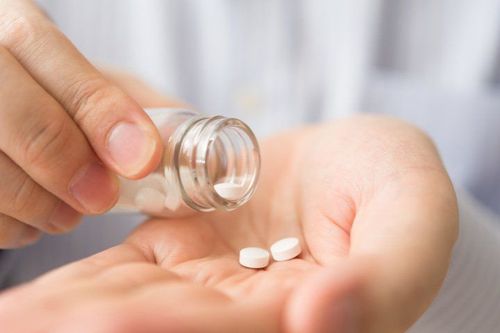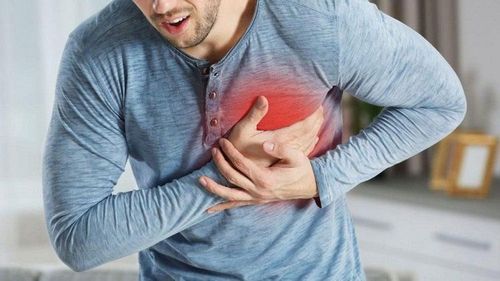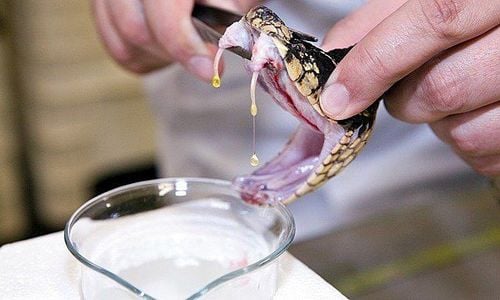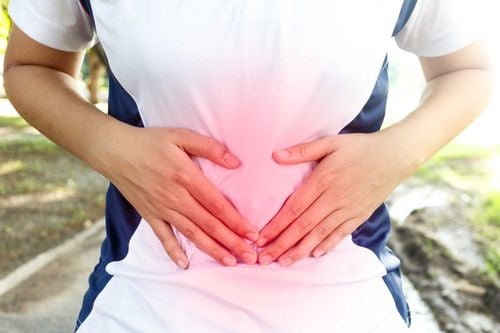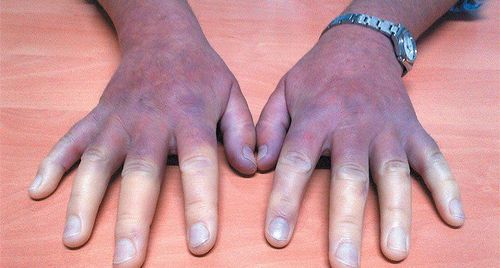This is an automatically translated article.
Children with Duchene muscular dystrophy is an inherited disease with progressive muscle atrophy, even leading to paralysis of the respiratory muscle group, causing respiratory failure and death. In addition to the use of medical drugs, rehabilitation is a method to help slow the progression of muscle atrophy and limit the risk of death in children.
1. What is Duchene muscular dystrophy?
Duchene muscular dystrophy is an inherited disease involving several genetic mutations. The disease is caused by an abnormality of the Xp21 gene on the X sex chromosome, inherited by the recessive gene on the X chromosome. The disease is characterized by the gradual atrophy of the muscles, leading to a decline in muscle function for a long time. is paralysis of the diseased muscle group.
The disease that appears right after birth is called congenital muscular dystrophy. In some cases, the onset of the disease is in adolescence. Even if the disease occurs at any time in life, it still needs treatment because it greatly affects the daily activities of children. Causes children to have physical retardation and paralysis.
Children have duchene muscular dystrophy due to mutations in the gene that regulates dystrophin - a protein involved in ensuring the integrity of the muscle spindle. The disease is common in boys, the age of illness is about 3 to 5, the disease progresses quickly. If not treated promptly, children will lose mobility in adolescence, and in adulthood can progress to paralysis of the respiratory muscles leading to respiratory failure and death.
The disease is common in the proximal extremities, starting in the lower extremities then progressing to the upper extremities, the trunk muscles and finally the respiratory muscles.
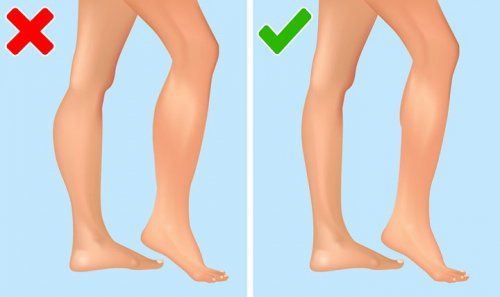
2. Clinical symptoms of the disease
2.1. Symptoms in the early stage
These symptoms often start early, possibly right after birth or from 3 to 5 years old:
Children have symptoms of motor retardation such as delays in turning, sitting, crawling , standing, walking and some motor skills such as finger pincers, hopscotch compared to children of the same age; Children often jump when walking, climbing stairs, walking on tiptoes, limping; Children may have some behavioral and emotional disturbances, language delays; The muscles in the extremities will show signs of gradual atrophy, when examining the movement, this muscle group will have reduced muscle tone, and the force of muscle contraction is also significantly reduced. Some other muscle groups show signs of hypertrophy such as the abdominal muscles group, the muscles of the forearm. 2.2. Symptoms in the later stages
Usually occurs between the ages of 10-12 years if not treated in the early stages. Symptoms include:
Abnormal walking and standing such as wide legs, slightly arched, Trendelenburg gait or tiptoe; During this stage, a positive Gowers sign can be detected: Ask the patient to get up from a squatting position on the floor. Due to weakness of the proximal muscles, the patient cannot stand up with 2 legs, instead, he has to put his hands on the floor to raise his body, then put his hands on his knees and move his hands gradually upwards to stand. straight; At this stage, the patient will have more damage to other organs due to the weakness of the muscles in this part: Contraction of some muscle groups: Due to the difference between the pulling force of the agonist and antagonist muscle groups should cause limb deformities, the limb will change depending on the dominant muscle group such as palmar flexion, foot flexion, knee flexion and cavernous flexion; The spine is crooked or too flexed. In severe cases, the child will lose the ability to walk; The weakened respiratory muscles will lead to a very dangerous situation where the child cannot breathe normally. Consequences are death without supportive ventilation measures; If the diaphragm and the muscles of the anterior abdominal wall are weak, the patient will not be able to perform the cough action to expel the phlegm, resulting in the accumulation of secretions in the alveoli, causing pneumonia or atelectasis. Cardiomyopathy: Typically dilated cardiomyopathy. In the first stage, the heart will increase contractility to maintain tissue perfusion, after a while, the heart has "worked" too hard leading to heart failure.
3. Tests performed in Duchenne muscular dystrophy
Tests used by doctors to diagnose a child with Dunchene muscular dystrophy include:
Genetic testing to look for chromosomal mutations associated with duchene muscular dystrophy; Prenatal genetic counseling through pedigree analysis, fetal sex determination, CK concentration quantification; Muscle biopsies and immunostaining of dystrophin, however, are often difficult to detect Dunchene muscular dystrophy. Biopsy reveals necrotic muscle fibers suggestive of disease; Electromyography to detect weak muscle groups to help diagnose the disease early; Electrocardiogram, quantification of cardiac enzymes, testing of CK levels (in Dunchene muscular dystrophy, CK levels increase 100 times normal); Echocardiography for the diagnosis of cardiomyopathies; Molecular genetic testing allows identification.
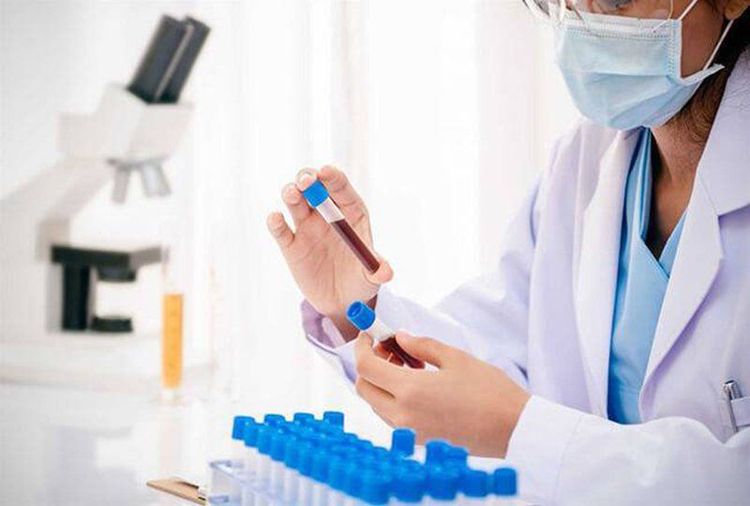
4. The role of rehabilitation in the treatment of muscular dystrophy Duchenne
Duchenne muscular dystrophy does not currently have a radical treatment, children will progress gradually until limb paralysis, respiratory failure, cardiac arrhythmia leading to death at a young age (about 12-20 years old). ). Along with the development of medicine, children with Duchenne muscular dystrophy have treatments to relieve symptoms, slow down the progression of the disease, and improve survival. Rehabilitation (Rehabilitation) is one of them, contributing to the success in the treatment of Duchenne muscular dystrophy in children.
4.1. The goal of rehabilitation in the treatment of Duchenne muscular dystrophy To help children perform daily activities more easily, to help muscle groups be worked regularly, so it slows the progression of muscle atrophy; Prophylaxis or treatment of muscle convulsions and bone and joint deformities; Preventing, alleviating respiratory symptoms, limiting respiratory failure in patients; Support children in normal physical and mental development; Instruct children to perform some basic movements at home to maintain the rehabilitation process; 4.2. Rehabilitation exercises Active movement:
Encourage children to walk, participate in fun activities to maintain health, regular "active" muscles will reduce atrophy muscle in children. Gentle walking is a recommended activity to help children develop normally both physically and mentally; The training course follows the instructions of the rehabilitation doctor, from light to heavy, from simple to complex exercises. Avoid movements that are too strong, affecting specific muscle groups due to increased muscle degeneration; The duration of exercise depends on the stage of the disease. Avoid prolonged exercise that causes muscle spasms; It is possible for children to practice water activities, especially in cases of severely impaired walking ability. Stretching exercises:
Symptoms of Duchenne muscular dystrophy are contractions of muscle groups such as the flexor muscles in the ankles, elbows, and knees. Over time, leading to limb deformity. Stretching exercises will help a lot in the process of motor training in children; Children need support from people around to perform this exercise. In the first stage, the doctor will be the one to help the child perform the exercise. Later, the family members will perform this task. Therefore, it is necessary to master the stretching technique to exercise correctly for children. Maintain exercise on a regular basis for best results. Breathing exercises for patients with muscular dystrophy Duchenne:
The first and most important exercise is breathing exercises for children. Teach children to breathe deeply, belly breathing techniques, practice blowing bubbles and effective coughing techniques. These exercises can be performed underwater, both increasing the effectiveness of the exercise and creating excitement and fun for children; In the case of significant decline in the function of the respiratory muscles, it is necessary to instruct the patient and family in the technique of postural drainage, vibrating to avoid sputum stagnation causing airway obstruction. If the child is in a state of respiratory failure, perform supportive ventilation measures to ensure enough oxygen supply to the organs; Orthopedic devices: Indicating children to use AFO splints when sleeping at an early stage to prevent foot flexion deformity. During the day, when children are active, they do not need to wear a brace or can use an AFO brace with a joint. In the late stages, when the child completely loses the ability to walk, it is necessary to wear the AFO brace all day; Mobility aids: When the child has reduced mobility, it is possible to assign and instruct the child to use a number of mobility aids such as walkers, strollers, wheelchairs.
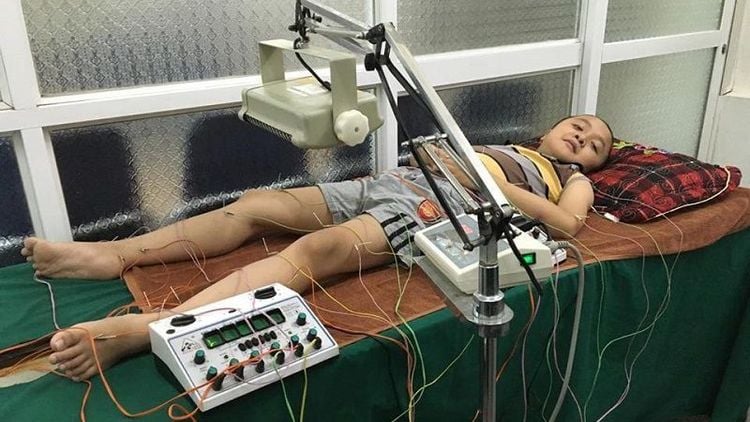
In summary, in addition to the use of medical drugs, rehabilitation is a method to help slow the progression of muscle atrophy and limit the risk of death in children with Dunchene muscular dystrophy.
Please dial HOTLINE for more information or register for an appointment HERE. Download MyVinmec app to make appointments faster and to manage your bookings easily.
Please dial HOTLINE for more information or register for an appointment HERE. Download MyVinmec app to make appointments faster and to manage your bookings easily.




